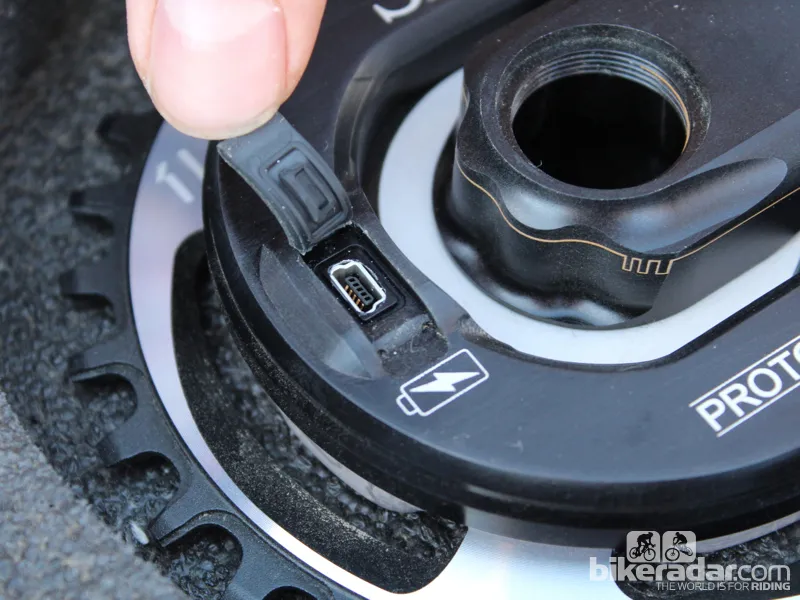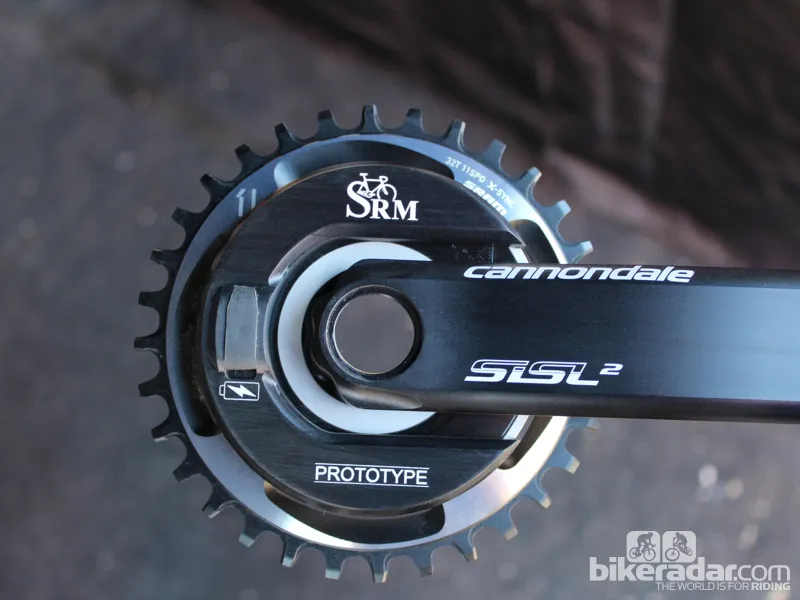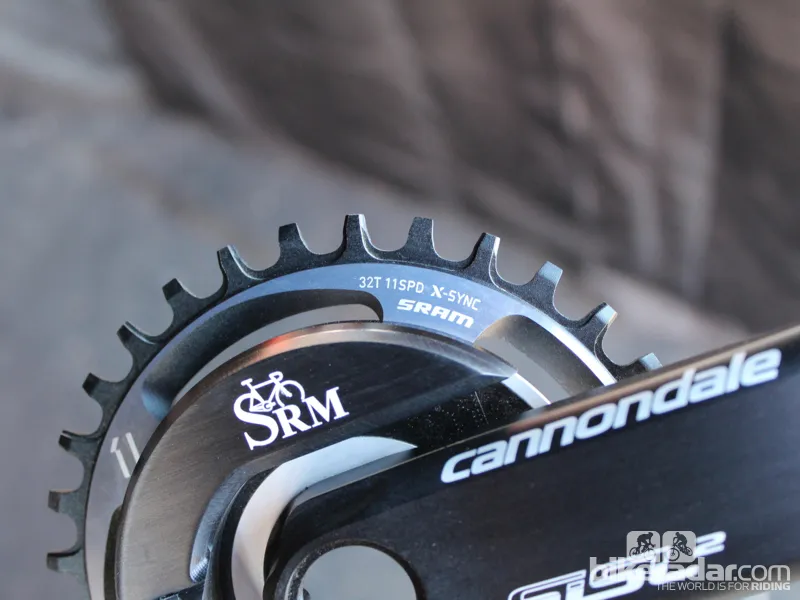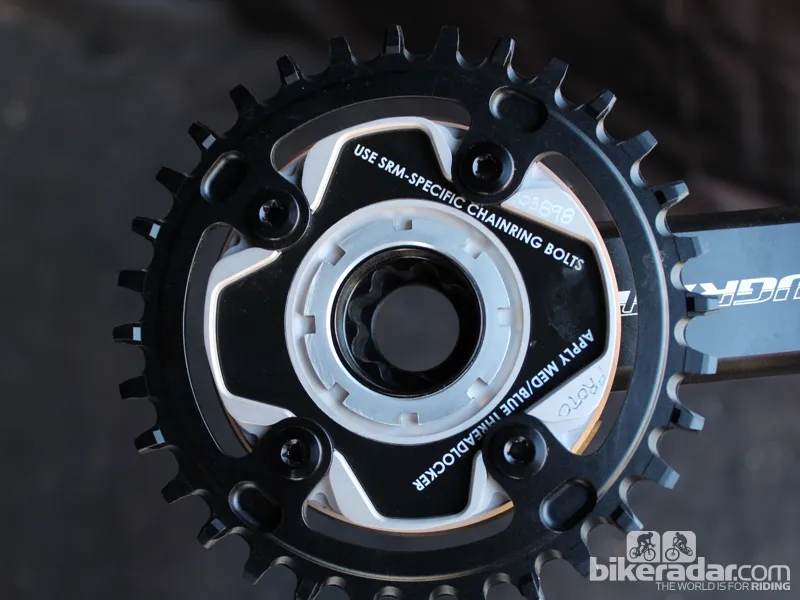SRM power meters have long been regarded as the gold standard within the professional peloton for their detailed level of data, but the system has its drawbacks. Price aside, SRM power meters use solid batteries that require users to send them back to the company when they eventually die after about 1,900 hours of use. Now, SRM is testing a rechargeable battery system on mountain bike power meters that uses a mini-USB port.
The German SRM firm has an office in Colorado Springs, Colorado, which assembles many power meters for the North American market. And it's this office that is testing SRAM XX1 and Cannondale SiSL2 mountain bike cranks with SRM spiders.

Power up the power meter with a mini USB
"We have seen growth every year for four years with mountain bike power meters," said SRM's Mike Hall. "With endurance races like Leadville 100 growing in popularity, more mountain bikers are training with power."
SRM is testing the rechargeable design on MTB cranks for another reason, though: the cranks take a lot more abuse than road models. "We are constantly banging them around, power washing the bikes, stuff like that," Hall said.
If and when the design proves solid, SRM will likely move the rechargable battery to the road models.

The SRAM XX1 SRM is being raced now in prototype form
The rechargeable battery should make the SRM lighter, too.
As the XX1 and SiSL2 cranks are prototypes, there is no pricing yet.
Hall said SRM founder Uli Schoberer wants to get the rechargable battery life to 300 hours, roughly the same as a battery for Shimano's Di2 electronic drivetrain. "Then you'd just charge both at the same time," Hall said. "For most people, that would be about two to four times a year."
Speaking of Di2, the new Shimano Dura-Ace 9070 Di2 SRM crank is available now for $3,145 (£2,062).
Battery life, GPS and data
Current SRM power meters use the now widely accepted ANT wireless frequency, which head units like the Garmin computers use to pull in data. But all power data is not the same — even if it is coming from the same source.
ANT protocol dictates that four data packets per second be sent from a power meter, but Garmin and most others only 'catch' and record one of these four. SRM's Power Control head unit, however, records all four per second, and shows an average of all this data on the screen.

The data captured here is only half the story. Or, more accurately, one quarter of the story
"With the Power Control, you are getting four torque values as opposed to one power data point per second," Hall said. "If you did a peak of 1,600 watts in a full-on sprint, you might miss that if you were using another power meter or another computer, depending on where it was recording."
So why doesn't Garmin record the same way as SRM? Battery life. As of now, it's an either/or situation for highly detailed power data and GPS functionality. The Power Control does not have GPS.
While SRM's price puts it well out of the range for most riders, it will be interesting to see whether other power meter and head unit companies follow the brand's lead with detailed data — or if SRM can integrate a GPS solution into its computer.




